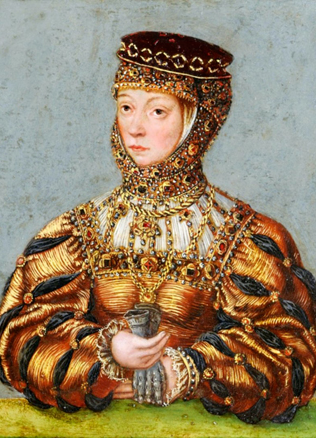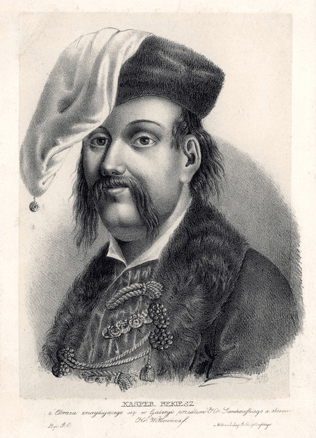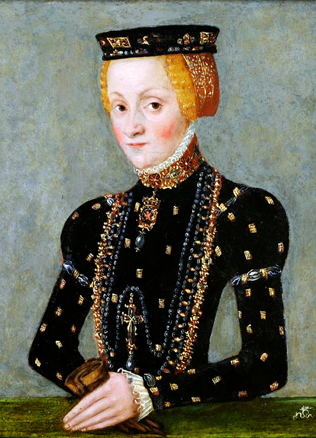Changes in the borders of the Grand Duchy of Lithuania
Expanse to the East and South: conquests and marriages
In the 13th century, the Lithuanian state was made of the Balt lands united by Ruler Mindaugas (King in 1253–1263); they were separated from the “non-state” territories by the implicit “external” boundaries of the archaic lands, which most often corresponded with the “pressed in” uninhabited wastelands. In this century Lithuanian territories were joined, the state expanded towards Kursh, Ziemgala, Sela, Skalva, Suduva and other lands. The Lithuanian state ousted from the lands of the Nemunas River Delta and Klaipėda by the Teutonic Order expanded its territory to the east and the south. In the times of Mindaugas, the lands of the Dukes of Black Russia were annexed to Lithuania. Around 1250, the Lithuanians occupied Polotsk and Navahrudak for the first time, and in 1258, devastated the lands of Smolensk, Voishin and Torzhok. When Lithuania was ruled by Traidenis (1268–1282), the units of the ancient lands were disappearing; a homogeneous territory of the state was forming. The Ruler’s domain of the times of Mindaugas, which included the lands of Deltuva and Nalshia, was expanding; Samogitia became submissive, influence on Grodno land strengthened. Traidenis expanded the territory towards the south, in 1273–1274, a war with Galicia-Volynia was begun, and in 1278, Polotsk obeyed him. Under the rule of Vytenis and Gediminas, the Grand Duchy of Lithuania penetrated deep into the East – the White Russia was occupied. It was not easy to maintain the occupied territories, a part thereof fell off. The marriage policy allowed them to be annexed more firmly. For example, in 1318, Algirdas married and only and the last daughter of the Duke of Vitebsk therefore from 1320 Vitebsk became Lithuania’s permanent holding. Turov and Pinsk became districts of the Grand Duchy of Lithuania under the rule of Gediminas. Gediminas often treated Pskov, Nowgorod and Smolensk as the towns subordinate to him. In the east, southeast of Smolensk, the Dukedoms of Novosil and Kozelsk were allies of the Grand Duchy of Lithuania. At the beginning of the 14th century, Gediminas occupied the lands of Palenkė with the centres of Drahichyn, Melnik, Belsk and Suraż. At the beginning of the third decade of the 14th century Galicia-Volhynia was conquered, and in 1323, Kiev was occupied.
Gradually the Grand Duchy of Lithuania became Moscow’s main rival for influence on the Ruthenian territories.
In the fifth decade and the second half of the 14th century, Rulers Algirdas and Kęstutis extended influence of the Grand Duchy of Lithuania in the east. In 1358, Algirdas occupied Mstislavl, a year later Smolensk recognized his power too. The sons and nephews of the monarch became dukes of the lands of Briansk, Trubčevsk, Chernigov and Novgorod-Severskiy, and in 1362, after the Tartars were defeated in the battle of Blue Waters, Kiev was annexed. The territory of the Grand Duchy of Lithuania expanded as far as the left bank of the Dnieper. The Ruler’s nephews Karijotaičiai became established in Podol.
Do You Know?
The borders of the Grand Duchy of Lithuania were not specially coordinated in the occupied territories for a long time. After the Ruler and the nobility were made to obey, the boundaries of the “old” dukedoms and lands became new borders of the Grand Duchy of Lithuanian. The conception of the borders of the territory of the state manifested itself in the times of Algirdas and Kęstutis.
Possession of Samogitia: Lithuania to the Order, Order – back to Lithuania
The borders of the core of the Grand Duchy of Lithuania were begun to be coordinated thereby interstate agreements, for example, in 1358, with Mosovia. In 1382, Ruler of the Grand Duchy of Lithuania Jagiełło concluded an agreement with the Teutonic Order transferring to the latter Smogitia as far as the River Dubysa, whose bed coincided with the border of the countries. In 1398, by the Treaty of Salynas, the Ruler of the Grand Duchy of Lithuania gave Samogitia over to the Teutonic Order; the state border was established whose guidelines resembled a line. The Samogitians resisted to the Order and in 1409 joined the Grand Duchy of Lithuania again. After the Battle of Grunwald in 1410, long negotiations between the Grand Duchy of Lithuania and the Order over peace were held. In 1422, having concluded the Treaty of Meln, Samogitia was given over to the Grand Duchy of Lithuania; the border sections with Prussia and Livonia were established.
The apogee of the expantion and strengthening of Moscow
Under the rule of Vytautas, the territory of the Grand Duchy of Lithuania extended to the east.
In 1398, the Khan of the Tartars Tochtamish transferred the rights to the territory between the Rivers Dniester and Dnieper that flew into the Black Sea by a separate document. After the 1440–1449 war between the Grand Duchy of Lithuania and Moscow, in 1408, the Rulers of Moscow made peace and the new border agreed upon coincided with the bed of the River Ugra. The expansion of the territory of the state of the times of Vytautas reached its climax, which was sought to maintain in the 15th century. In 1440-1449, the Ruler of the Grand Duchy of Lithuania Casimir Jagiellonczyk, when concluding the Treaty with Moscow, Tver, and Naugard sought to preserve the borders of Vytautas’ times. However, with the political situation changing, with Moscow strengthening, the borders of the Grand Duchy of Lithuania changed. In 1451, Ruler of Moscow Vasilj II annexed the Dukedom of Tver. Mostly unsuccessful wars with Moscow at the end of the 15th and in the 16th centuries changed the territory of the Grand Duchy of Lithuania. In 1494, by the Peace treaty between the countries, Lithuania refused its rights to Naugard, Pskov, Tver, Viazma, Aleksin, Toshilov, Roslavl, Venev, Mstislavl, Tarus, Obolensk, Kozelsk and other territories but got back Mcensk, Serpeik and Liubutsk. In 1547, Ivan IV declared himself Tsar of all Russia, sought to occupy Kiev, Volhynia, Polotsk (he conquered it in 1564), Vitebsk. In the second half of the 16th century, the Grand Duchy of Lithuania managed to get back a part of its lands (in 1579 – Polotsk, in 1580 – the stronghold of Veliki Luki).
Pressure from the Ottomans, losses after the Union, and Livonia reconquered
The borders with other countries “moved” in a similar way. In 1475, after Sultan of the Ottoman Empire Mehmed II became the suzerain of the Crimean Khanate, the Tartars attacks against the territories of the Grand Duchy of Lithuania intensified. In 1484, the Sultan of the Ottoman Empire Bajazid II occupied a part of the neighbour of the Grand Duchy of Lithuania – the territory of Moldova with Kilia Port near the Denube Delta and the Port of Belgorod (Akerman) on the Dniester, and in 1486, Voivode of Moldova Stephan III became a vassal of the Ottoman Empire. The Turks reached the GDL border, which ran along the River Dniester, and in 1538, the Ottomans occupied the territory that had been in the composition of the Grand Duchy of Lithuania on the Black Sea between the Rivers Dniester and Dnieper. Though it was demanded that the occupied lands should be returned, in 1540-1542, the new borders of the Grand Duchy of Lithuania were agreed upon with the Ottomans.
Do You Know?
Though it was becoming difficult for the Grand Duchy of Lithuania to keep the borders of Vytautas’ times, and in case of the border with Livonia, the Grand Duchy of Lithuania itself did not want to agree with the boundaries of Vytautas’ times and demanded that they should be pushed deeper into Livonia. This happened in the 16th century, and in 1561, Livonia joined the Grand Duchy of Lithuania (in 1562, the Dukedom of Kursh was created). It was not only wars that changed the territories of the states. In 1569, seeking to make the Grand Duchy of Lithuania conclude a union with Poland, according to the privileges granted by Ruler Sigismund Augustus, the voivodeships of Voluin, Palenkė, Kiev, Podol and Braclav were annexed to Poland. A long quarrel over these territories was going on between the countries. The border of the Grand Duchy of Lithuania and Voluin was established only in 1638; it was more complicated to mark the border between the voivodeships of Kiev and Minsk and between Brasta and Poland.
The last borders of the GDL and the partitions
In the 17th century devastating wars of the Grand Duchy of Lithuania and Poland went on with Sweden and Moscow, which changed the borders of the states. In 1629, the Truce of Altmark, Treaty of Suza with Sweden determined that it got the right bank of the River Daugava with Riga and Klaipėda with the Curonian Spit. Ruler Sigismund Vasa sought to get back some territories of the Grand Duchy of Lithuania in the east. In 1609–1618, the dukedoms of Chernigov, Novgorod Severskiy, and Smolensk were occupied and the latter was legalised as the voivodeship of Smolensk of the Grand Duchy of Lithuania in 1613. In 1618, by a peace treaty, Moscow recognised that the lands of Smolensk belonged to the Grand Duchy of Lithuania and Novgorod Severskiy and Chernigov belonged to Poland. Meanwhile, according to the 1667 peace treaty of Antrusove with Moscow, the Grand Duchy of Lithuania lost the voivodeship of Smolensk and the district of Starodub, and the established border remained in essence unchanged until the first partition of the Commonwealth of the Two Nations.
Do You Know?
In the second half of the 18th century, Russia, Prussia and Austria became established in the region. Political interests of these states determined the partitions of the Commonwealth of the Two Nations. In 1772, during the first partition Russia received the voivodeship of Mstislavl, a part of the voivodeships of Polotsk, Vitebsk and Minsk, and the commissions of the countries marked the new state borders. In 1793, the second partition of the Commonwealth of the Two Nations took place. The Grand Duchy of Lithuania lost a part of the voivodeships of Polotsk and Vitebsk, which had been left to it after the first partition, as well as the voivodeship of Minsk, and the eastern part of the voivodeships of Brest, Vilnius and Naugardukas. During the third partition in 1795, the Commonwealth of the Two Nations was destroyed, Russia occupied the territory of the Grand Duchy of Lithuania as far as the River Nemunas, and Prussia annexed the left bank (Užnemunė) of the Middle Nemunas.
Literature: Lietuvos sienos. Tūkstantmečio istorija. Vilnius, 2009.
Tomas Čelkis



